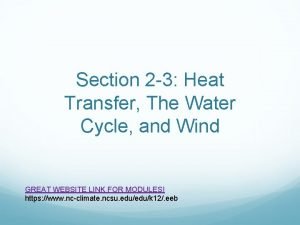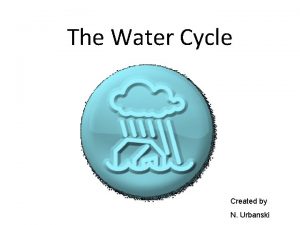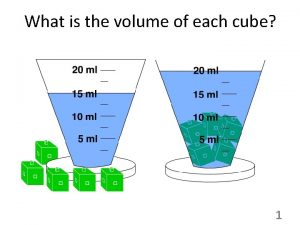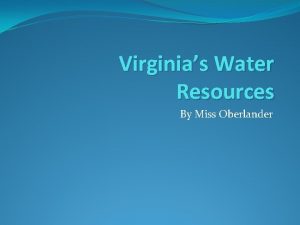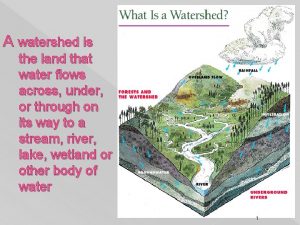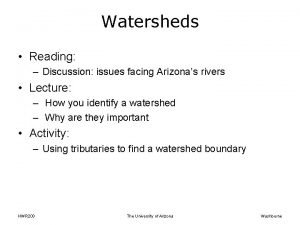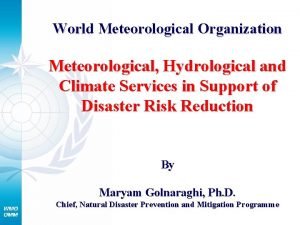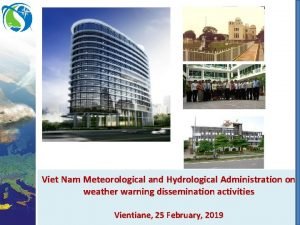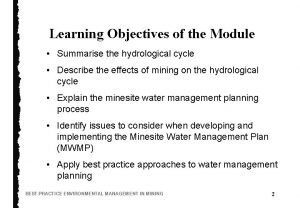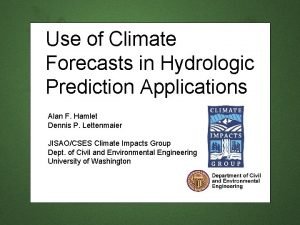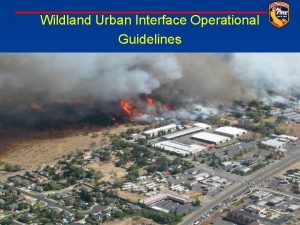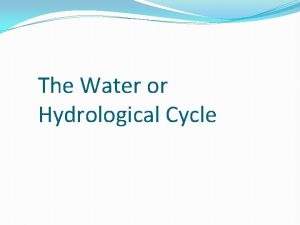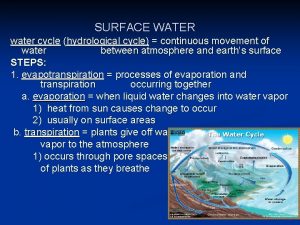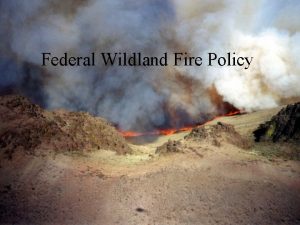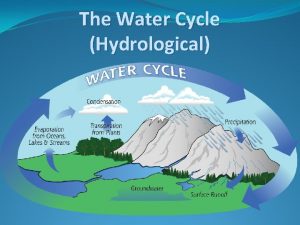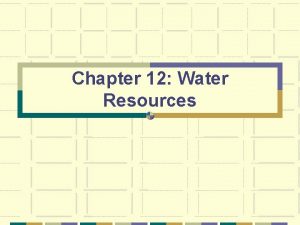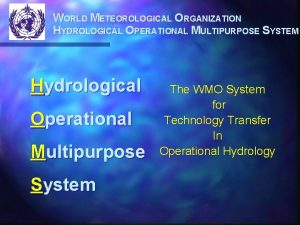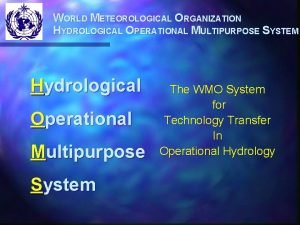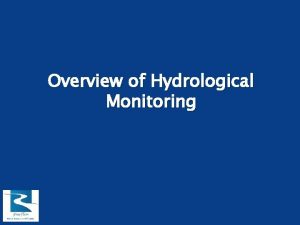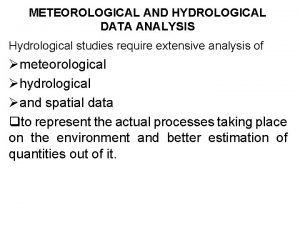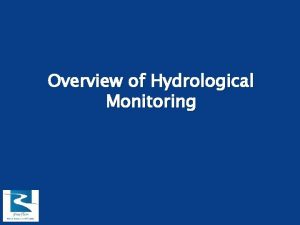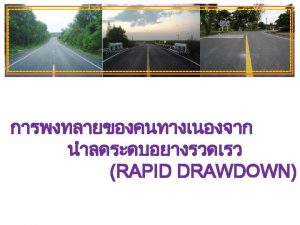The Hydrological Cycle Water values Wildland Watersheds 11



























- Slides: 27

The Hydrological Cycle Water values

Wildland Watersheds! • 11 western states, >90% of human water consumption comes from wildland watersheds. • Clean water for human consumption is one of the important natural resources from wildland watersheds.

Global Water Distribution Reservoirs Volume (106 km 3) Volume (%) Freshwater Volume Only (%) Freshwater Volume without Glacial Ice (%) Residence time† Oceans & seas 1, 370 94 Freshwater Lakes & reservoirs 0. 125 0. 01 Saline lakes 0. 104 0. 008 Total groundwater 60 3. 9 Groundwater, actively exchanged 4 0. 29 Soil and subsoil moisture 0. 670 0. 005 0. 07 29 2. 08 33. 3 Rivers 0. 0012 0. 00009 <0. 01 10 -20 days Wetlands <0. 01 1 -10 y Atmospheric water 0. 014 0. 001 0. 02 ~10 days Biospheric water <0. 001 <0. 01 ~1 week Polar ice & glaciers ~4, 000 y 0. 14 0. 21 10 -300 y 1 -100 y 66. 5 99. 65 2 wks - 50, 000 y ~300 y 0. 11 Weeks - years >10, 000 y


In Equation Form: P = RO + ET S P ET = RO

Precipitation • a) Circulation patterns of air masses, especially storm paths. • b) Distance and direction from large water bodies like oceans and seas, and large lakes. • c) Location in relation to topographic barriers. • d) Altitude.










Temporal Variability in Water Availability • Seasonal • Storms • Yearly

Hydrograph

Watershed Definition: Watershed: An area of land that drains water, sediment and dissolved materials to a common receiving body or outlet. The term is not restricted to surface water runoff and includes interactions with subsurface water. Watersheds vary from the largest river basins to just hectares or less in size.

Organization of Watersheds: • Boundary of a watershed is named a divide. Watersheds often divided into smaller units called subbasins, drainage areas, or water resource inventory areas. A patchwork of: • Upland consists of forest, range, agriculture and/or urban patches. Including: • Lakes. • Wetlands. • Alpine Areas and Glaciers.

Watershed Headwaters Divide Tributary Subbasin Mouth

Watershed

Stream Order

Stream Types • effluent or gaining stream • influent or losing streams • hyporheic zone

A Hyporheic Flow B C

Flow Patterns • Perennial streams exhibit continuous flow throughout the year. • Intermittent streams only flow during wet seasons and usually dry up during the dry period of a normal year. • Ephemeral streams flow in direct response to precipitation or snowmelt.

Flow Patterns • Storm flow appears in the stream channel in direct response to precipitation and/or snowmelt. • Base flow is stream flow sustained during interstorm or subfreezing periods.

Hydrograph
 Water cycle heat transfer
Water cycle heat transfer Label the water cycle
Label the water cycle Water and water and water water
Water and water and water water Which island is the oldest
Which island is the oldest What are the three major watersheds in virginia
What are the three major watersheds in virginia What are the three major watersheds in virginia
What are the three major watersheds in virginia What separates watersheds
What separates watersheds Segmentation by morphological watersheds
Segmentation by morphological watersheds National meteorological and hydrological services
National meteorological and hydrological services Vietnam meteorological and hydrological administration
Vietnam meteorological and hydrological administration Croatian meteorological and hydrological service
Croatian meteorological and hydrological service Hydrological
Hydrological Hydrological prediction center
Hydrological prediction center Leader's intent
Leader's intent Trigger points wildland fire
Trigger points wildland fire Pincer fire attack
Pincer fire attack Laces wildland
Laces wildland Ftp.nifc.gov to ftp.wildfire.gov
Ftp.nifc.gov to ftp.wildfire.gov Wfdss
Wfdss Brainpop.com water cycle
Brainpop.com water cycle Water cycle the hydrologic cycle
Water cycle the hydrologic cycle Western vs eastern values
Western vs eastern values Machavillian
Machavillian Terminal values and instrumental values
Terminal values and instrumental values A bit can have only two possible values
A bit can have only two possible values Types of human values
Types of human values Core values of water refilling station
Core values of water refilling station Hát kết hợp bộ gõ cơ thể
Hát kết hợp bộ gõ cơ thể
